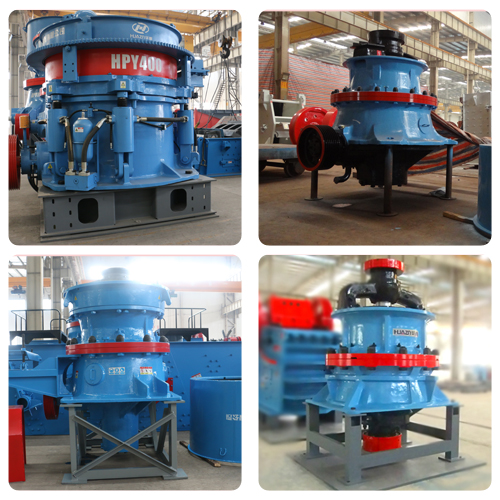At present, the cone crusher stands out in the crusher industry by virtue of its large production capacity, large crushing ratio, good grain shape, low energy consumption, high degree of automation, high reliability, simple operation and maintenance, and low cost of wearing parts. More and more cone crushers are being used in mine crushing sections and aggregate crushing lines. I think how to use cone crusher efficiently is a hot spot for manufacturers and users. In addition to the equipment operation and the nature of the material itself, the feeding process conditions and the arrangement of the feeding equipment will affect the operation of the cone crusher. Today, let's take a look at the relationship between the correctness of the feed and the operation of the cone crusher.
1. Why is the pre-screening equipment added before the broken cone
When the ore is broken in the crushing chamber, a certain gap exists between the particles. If the gap between the particles is small and the "space" required for the breakage of the larger particles is insufficient, it is difficult to break the material. Generally, the feed of the crushing cone crusher comes from the discharge of the coarse crushing jaw crusher. Influenced by the source of raw materials and the insufficient pre-screening of the coarse crushing section feeder, the discharge of the coarse crushing jaw contains a lot of fine materials (smaller than the discharge port of the crushing cone or the materials that can directly enter the next crushing section). Therefore, pre-screening equipment should be added in front of the medium-crush cone crusher. In this way, on the one hand, the particles with smaller particle size in the E-breaking discharge are separated in advance, so as to ensure ample space between the bulk materials in the broken material of the broken cone, which helps to strengthen the laminating fracture, improve the crushing efficiency, and reduce the lining. Plate consumption; on the other hand, the sieved material can directly enter the fine crushing operation (such as fine crushing cone or vertical shaft impact) to improve the processing efficiency of the entire production line.

2. The relationship between particle size composition and fracture cavity type
Different from the medium crushing cone crusher, the feed of the fine cone crusher is the sieved material, and the particle size range of the feed is narrow. Therefore, for the different feed size composition of the fine crusher, it is necessary to select a suitable crushing cavity type so that the material size fills the entire crushing cavity from large to small, so as to ensure that the actual operating power of the crusher motor is maintained at a high level. The lining plate wears evenly and can fully exert the excellent performance of the cone crusher. If the feed size is coarse, the fracture of the material mainly occurs in the upper part of the crushing chamber. If the feed size is fine, the fracture of the material mainly occurs in the lower part of the crushing chamber, and the lower liner is seriously worn. Both of them will cause the actual running power of the cone crusher to be low, and the irregular wear of the liner will shorten the service life of the liner and increase the production cost.
3. The relationship between lamination breaking principle and feeding amount
At present, the GPY series single-cylinder hydraulic cone crusher and the HPY series multi-cylinder hydraulic cone crusher all require uniform filling of the feed. Mainly to make the material form a “laminate and fracture” in the crushing cavity, which is beneficial to improve the crushing efficiency, reduce the wear and energy consumption of the liner, and more importantly, the principle of laminating and crushing, so that the flat and long particles are broken first. The product has a better particle size, achieving greater throughput, higher production efficiency, lower unit energy consumption and better product size.

